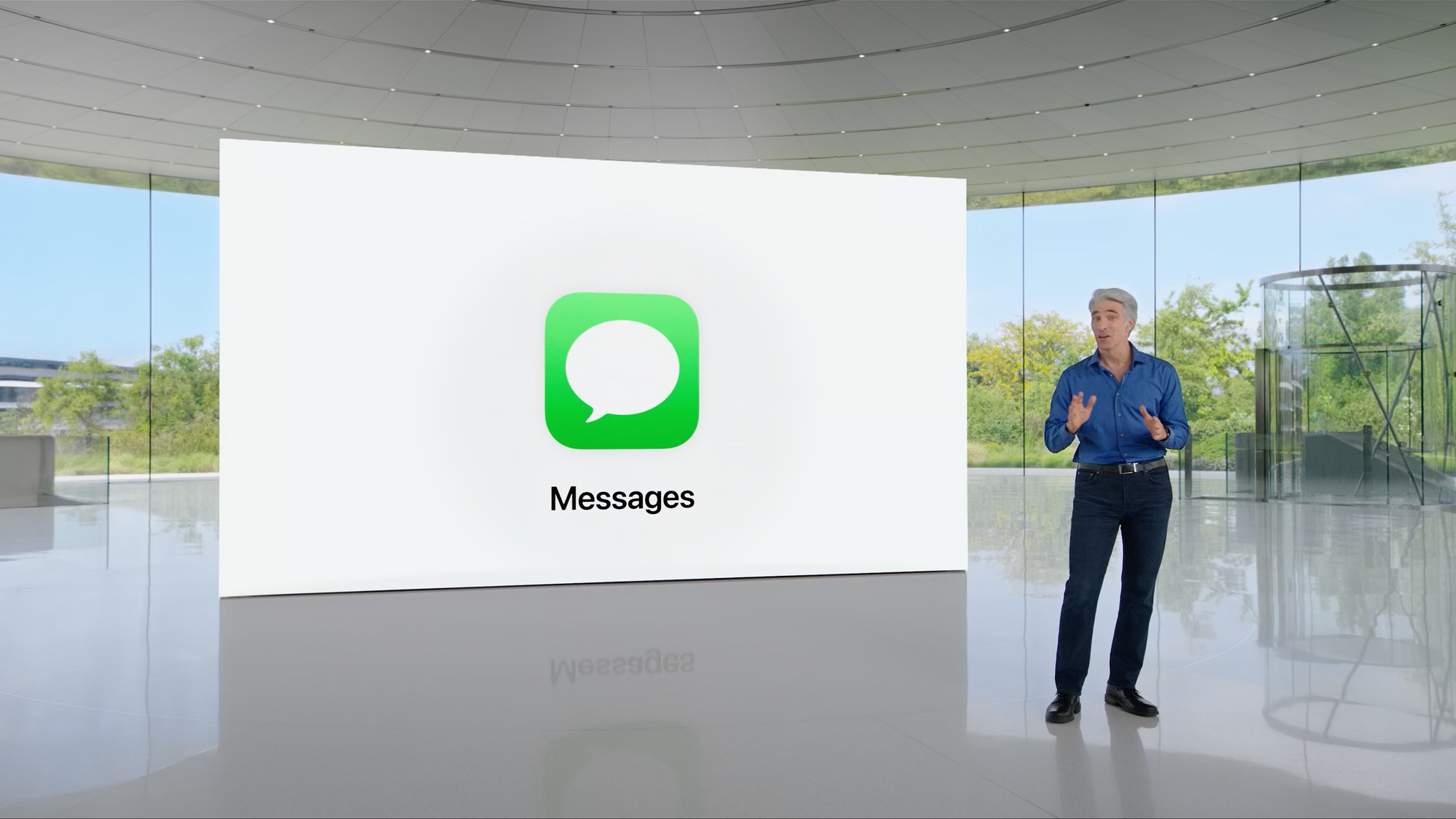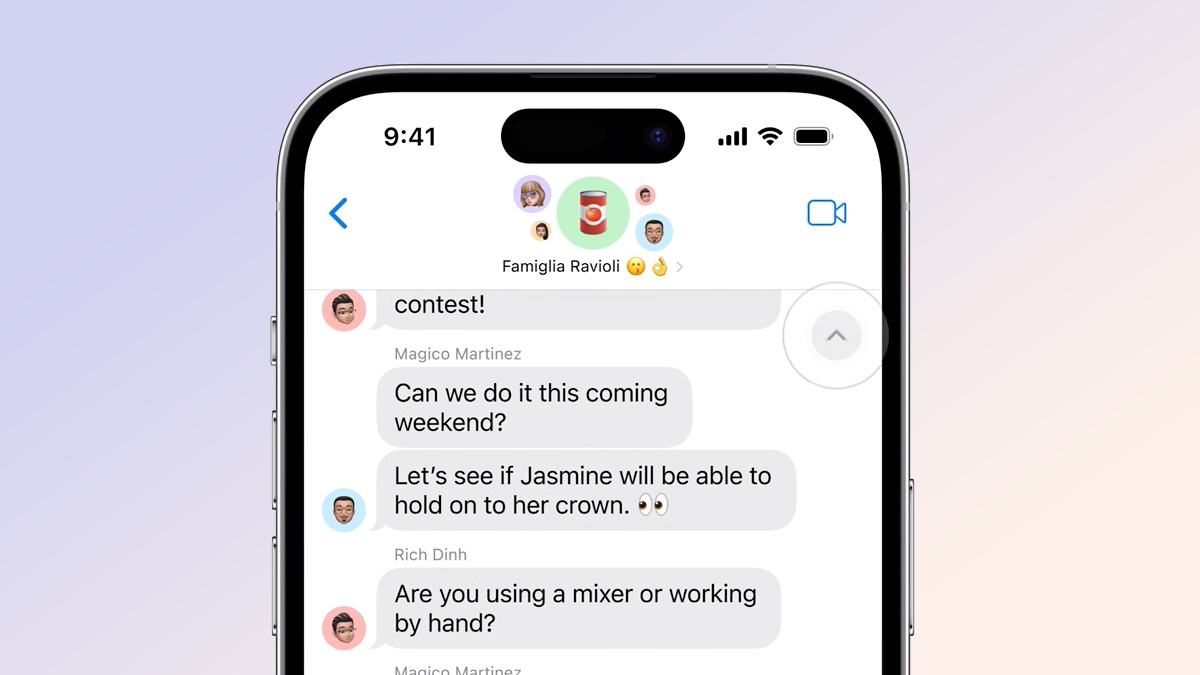iOS 17 Messages — 8 biggest changes coming to your iPhone
The Messages app on your iPhone is getting some new features with iOS 17

Messages is one of the more popular built-in apps for the iPhone, so it's no surprise that it's seeing some pretty substantial changes with iOS 17. In fact, of all the current iPhone apps, it's hard to think of one getting a bigger refresh in iOS 17 than Messages, outside of maybe the Phone app.
Besides a welcome adjustment to the Messages interface, iOS 17 lets you find things faster and share more information in chats. There's even a new tool that should provide greater peace of mind to both you and your family and friends when you're out and about.
The volume and types of changes speak to how important Messages is to the iOS experience — and why Apple might be reluctant to embrace the RCS messaging standard. Apple can point to Messages as a competitive advantage for iOS over other mobile platforms, and adding features like the ones coming in iOS 17 only strengthen that claim.
iOS 17 is currently available as a developer beta, though a public beta is set to arrive next month ahead of the full release of the iPhone software in the fall. Based on what Apple announced at WWDC 2023 this past week and what we've heard from people who've downloaded and installed the iOS 17 beta, here's what you can expect the first time you fire up the Messages app after upgrading.
Easier access to iMessage apps
In the iOS 16 version of Messages, iMessage apps — we're talking things like Apple Cash, Photos, Digital Touch and any other app that interacts with Messages — live right above the keyboard. Frankly, it's a pretty cluttered view that requires a lot of side-scrolling to get to the app you want.
That changes in iOS 17. Instead, there's now a Plus button next to the text field. Tap it, and your most frequently used apps appear in a vertical list. At the bottom, you'll find a More button, which expands the list into a scrollable roll call of all the apps at your disposal.

The change requires some extra tapping to get to your iMessage apps, but it means a less crowded main interface where messages can take more of the center stage. That's a trade-off Apple appears happy to make.
Get instant access to breaking news, the hottest reviews, great deals and helpful tips.
Swipe to reply

You can currently reply to a specific message in a conversation by tapping and holding on the message, then selecting reply from the pop-up menu that appears. iOS 17 is adding a shortcut — now you can just swipe right on a message to reply directly to it.
Catching up on busy conversations
I'm in a few group texts that have an unerring tendency to light up in a flurry of posts and replies just as I need to go heads down on a deadline. A new catch-up feature in iOS 17 seems designed for people like me who wade back into conversations after the fact.

Specifically, a catch-up arrow now appears in the top right of conversations. Tap it, and you'll jump back to the first unread message that's appeared since you last checked in.
More refined searches
Current searches for old messages in iOS 16 feel like a hit-or-miss affair. You type in a search term and hope like heck it turns up a relevant result in your conversations or links.

The iOS 17 version of Messages figures to refine searches, giving you the ability to combine different filters — a certain word, say, along with messages from a specific person. The idea behind the switch is that you'll be able to narrow down search results to find what you're looking for more quickly.
Audio message transcriptions
Cast your mind back to the release of the Pixel 7 last fall. Google's Tensor G2-powered phones gained the ability to transcribe audio messages sent in texts, giving you the ability to read the transcript when playing back the audio simply wasn't feasible. It sounds like iOS 17 Messages is adding a similar capability.

It's unclear at this point whether transcribed audio messages will appear automatically or whether you'll have to tap a button to begin the transcription. Apple's WWDC demo would seem to suggest the former, but that's something we'll have to discover in the iOS 17 beta.
Streamlined location sharing in iOS 17
You can share your location with someone in the current version of Messages, though the process isn't that intuitive. Right now, you tap on their name at the top of the conversation, and on the ensuing screen, tap Send My Current location. A map showing your location will appear in the conversation, which can make it handy for finding where people are when you're supposed to meet.
iOS 17 should make that whole process much easier. Remember that Plus button that lets you access your iMessage apps? There's a Location option in that list of apps that brings up the map view, which you can then share with whomever you have a conversation with.
Check-in feature
An even handier feature built around location sharing is the new Check-in capability coming to iOS 17 Messages. When you head out, you'll be able to start a Check-in within a conversation that lets the recipient know where you're headed and when you expect to arrive. Think of it as similar to the Share My ETA capability in Maps.

However, Check-in in Messages includes some additional safety features. Should you get delayed on the way, your iPhone will check in with you to see if you want to add time to your ETA. If you don't respond after a set amount of time, the Check-In will share information about your last location, the battery remaining on your iPhone and your cellular service status. (Presumably, you set all this up ahead of time in Message's Settings.) All of that information is end-to-end encrypted, according to Apple.

Once you arrive at your destination, Check-in automatically informs the person in Messages that you've made it.
We have some questions about how Check-in is setup and how you launch the feature in Messages, but those will likely be answered once we dive into the iOS 17 beta.
A Sticker drawer for Messages
Being a man of a certain age — this is a polite way of saying I'm an old man set in my ways — I don't get terribly excited about Stickers, which you can attach to videos and photos in Messages conversations. But other people like the feature well enough that Apple is adding a drawer for your Stickers, giving you easy access to every sticker in your possession.
You access the Stickers drawer by tapping that Plus button to access your iMessages apps. There's a link to Stickers that brings up the drawer where the on-screen keyboard normally lives. From there, you can drag stickers into conversations.

In addition to the stickers you've collected or created, emojis can now be stickers, too. A far cooler addition, though, draws on the capability Apple added in iOS 16 that lets you tap and lift the subject out of a photo using Visual Look Up. You can now use that tool to turn people and things that you've photographed into stickers.
Even better, the functionality even works with Live Photos — those images you shoot that have a few seconds of motion. Lift out the subject of a Live Photo and your new sticker retains that movement — basically, Apple's added animation to stickers, and all it takes to create one is a couple of taps.
iOS 17 Messages outlook
That's quite a list of changes to Messages, especially considering that iOS 17 is supposed to be a lower key upgrade than recent iOS releases. Still, given the high usage of Messages, it makes sense for Apple to introduce some enhancements to the app. And the iOS 17 enhancements look like they could dramatically simplify a lot of tasks.
More from Tom's Guide
- Duck yeah — how iOS 17 is tackling auto-correct woes
- iOS 17 StandBy Mode looks amazing — but it’s also a missed opportunity
- iOS 17 won’t be coming to iPhone X, iPhone 8 or iPhone 8 Plus
Philip Michaels is a Managing Editor at Tom's Guide. He's been covering personal technology since 1999 and was in the building when Steve Jobs showed off the iPhone for the first time. He's been evaluating smartphones since that first iPhone debuted in 2007, and he's been following phone carriers and smartphone plans since 2015. He has strong opinions about Apple, the Oakland Athletics, old movies and proper butchery techniques. Follow him at @PhilipMichaels.

